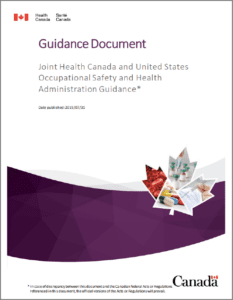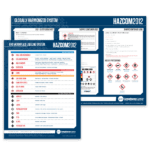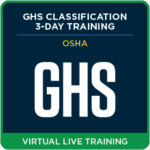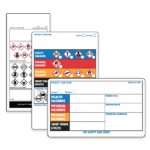
Joint Health Canada and United States Occupational Safety and Health Administration Guidance
When creating a safety data sheets (SDS), whether it is for Canada or United States, both regulations consider the Globally Harmonized System of Classification and Labelling of Chemicals (GHS). This helps regulatory bodies coordinate regulations so that hazards in both countries are understood and have similar meanings. Basically, apples are apples and oranges are oranges. Even though that was the intention for GHS, everyone knows this is not the case. Every regulatory body has made minor variances to accommodate their own regulations based on scientific data and there understanding on how to manage chemicals. But that is another topic.

In this joint guidance document, it explains how to handle classifications and each header is defined by its own regulatory body. For example, in the United States OSHA defines an HNOC as “an adverse physical or health effect identified through evaluation of scientific evidence during the classification process that does not meet the specified criteria for the physical and health hazard classes….” Basically, what this means is an Acute Toxicity Category 5 Hazard would be considered a HNOC whereas an Acute Toxicity Hazard Category 4 would not. Simply because the Acute Toxicity Hazard Category 4 is incorporated already to Occupational Safety and Health Administration (OSHA). In Canada PHNOCs and HHNOCs are handled separately and cover any hazard that is not covered already in the Hazardous Products Regulations (HPR). OSHA does not differentiate.
The joint guidance document also explains how to handle labelling and classification when dealing with Canada and United States based on the small differences. For example, OSHA does not consider HNOC to be mandatory on labelling, whereas HPR does require labelling for HHNOC and PHNOC. Another example is if an exclamation pictogram is required for a HHNOC or a PHNOC then it is only required once. It does not have to show more than once if it coincides with additional HPR pictograms. There are several other recommendations in this joint guidance developed by the RCC. Let ICC help you classify your SDS for full compliance to either OSHA or HPR.
Let ICC Compliance help you classify your safety data sheets for full compliance to either OSHA or HPR. Our team of experts is just a call away for our customers at 855.734.5469 or send us an email, we’re happy to help.
Stay up to date and sign up for our newsletter!
We have all the products, services and training you need to ensure your staff is properly trained and informed.
 GHS Posters & Charts GHS Posters & Charts |
 OSHA/WHMIS/GHS OSHA/WHMIS/GHSTraining Courses |

 GHS Workplace Labels
GHS Workplace Labels




 ICC USA
ICC USA ICC Canada
ICC Canada